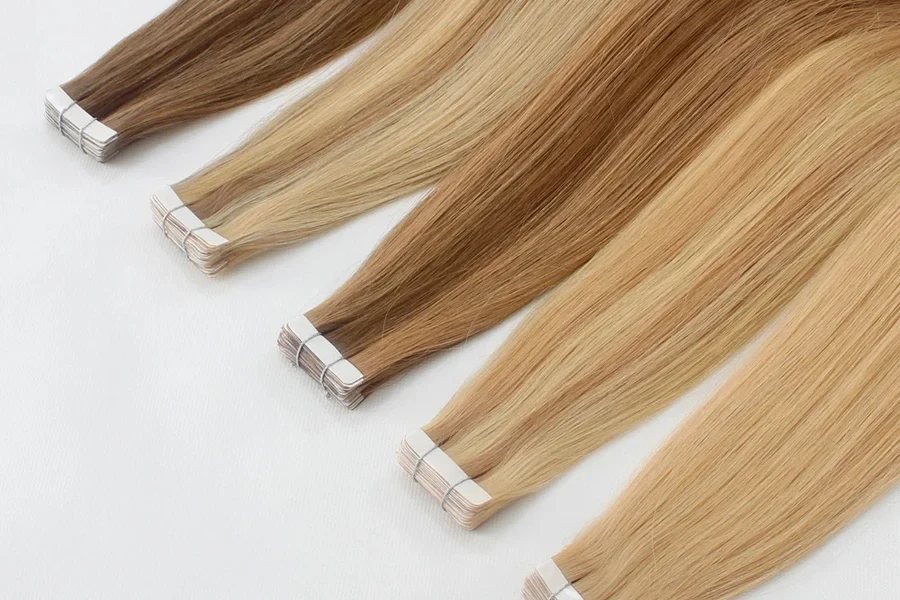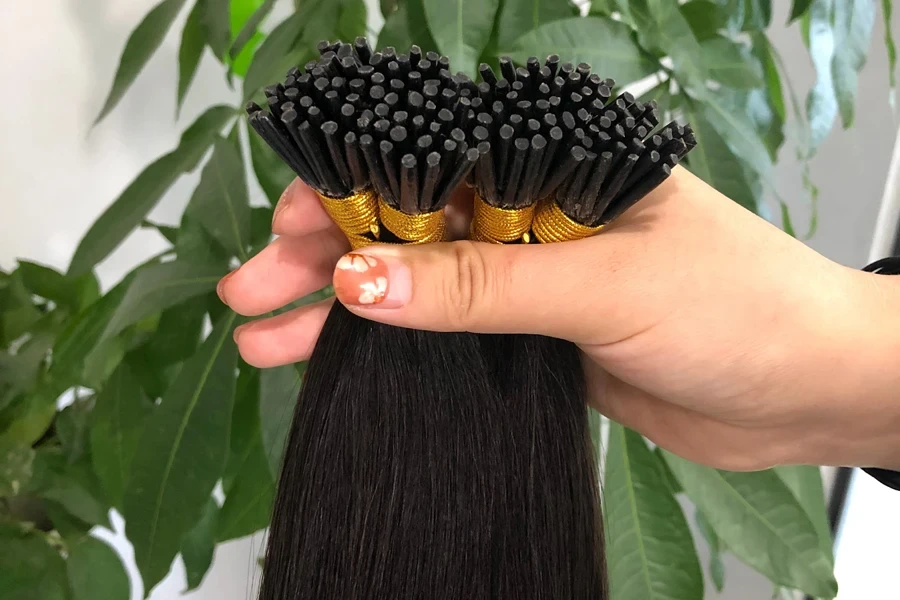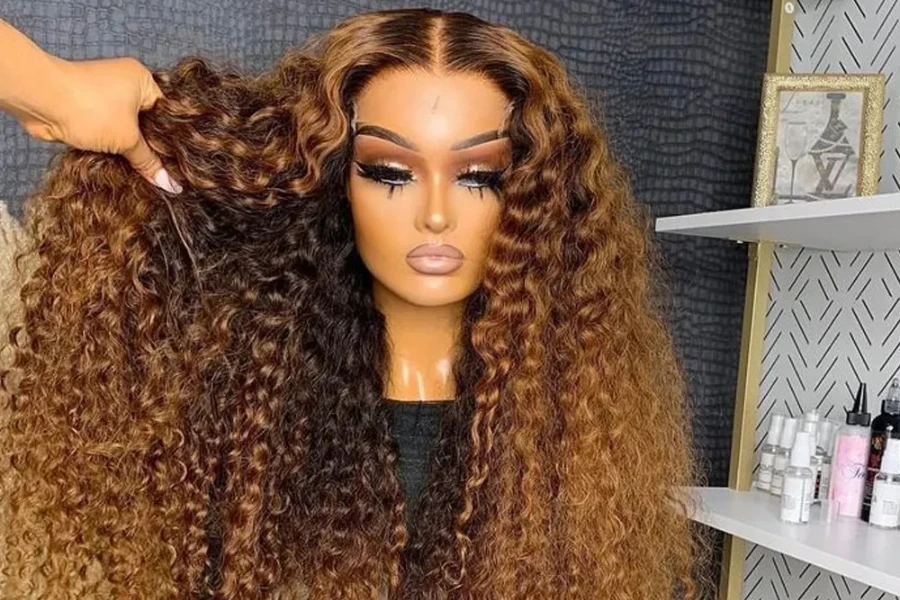Some days, natural hair may be too short for female consumers to get their preferred styles. They may also want to add volume or shiny hair to their natural hair. Since not everyone wants to rock a full wig, hair extensions have become the next viable option.
But a quick look into the hair extension market will see sellers confronted with terms like clip-ins, micro-links, tape-ins, pre-bonded, etc. No doubt, these terms may seem intimidating, but they’re simply the kinds of extensions businesses can add to their hair stores.
This article will break down the different artificial hair extension types to give businesses a better understanding of what they should purchase in 2024.
Table of Contents
How big is the artificial hair extension market?
Artificial hair extensions: 5 types consumers are looking at in 2024
Wrapping up
How big is the artificial hair extension market?
Experts say the hair extension market will surge to US $12.27 billion (from US $6.83 billion in 2023), registering an 8.4% compound annual growth rate (CAGR) from 2023 to 2030. Consumers now see hair extensions as a major way to foster self-confidence, which experts expect will be a huge driving force for the market.
Here are other statistics from marketing experts:
- Although wigs are the dominant segment (over 75% of the 2022 market share), experts predict demand for extensions will register an 8.9% CAGR.
- Human hair also grabbed the leading position, holding 66% of the market’s revenue share. However, most wigs and extensions come from synthetic materials.
- North America captured 40% of the overall revenue, cementing itself as the dominant region from 2022. Asia-Pacific is growing fast, with reports suggesting it will register the highest CAGR (about 9.6%).
Artificial hair extensions: 5 types consumers are looking at in 2024
1. Clip-in hair extensions

Also known as clip-in wefts, these extensions are strands of contoured pieces attached to a base with silicone or fabric. Then, manufacturers attach clips to their bases to make them ready to use on the go.
All women must do is clip their preferred pieces to their natural hair. The best part is that each clip snaps open and closes easily, so using these extensions is a mostly hassle-free process.
More importantly, these hair extensions are the best options for women looking for the least permanent styles. They can remove and add them quickly and easily, with most processes taking 5 to 15 minutes.
Since they don’t involve chemicals, heat pressure, or other installation methods, clip-in hair extensions cause zero damage to the natural types. That is why they’re the most popular hair extensions, with over 90,500 searches in January 2024 (based on Google data).
Even better, clip-in hair extensions don’t require a lot of maintenance. Consumers only need to wash them every 15 to 20 wears, and they’ll be good as new. With regular wear and proper care, they can last up to six months, sometimes even a year.
2. Sew-in hair extensions
In contrast to clip-ins, sew-ins (or weaves) need the help of an expert hairdresser—consumers simply can’t use them on their own. Consumers typically weave their natural hair into cornrows, then sew these braids to their hair—with the help of a thread and needle.
Sew-in hair extensions are more common among consumers with thicker hair because of their application process. Generally, applying weaves is a tedious process, usually taking several hours. They also heavily strain the scalp, making weaves incompatible with thin or lighter hair.
Consumers can also get weaves in wig form. Despite coming in one piece instead of wefts, these wig-form sew-ins still attach to the cornrows similarly.
Sew-in hair extensions are popular (90,500 searches in January 2024, according to Google data) because of their seamless look and permanence. Hairdressers sew these extensions into the natural hair so that they can’t come off and offer the most natural look.
3. Microlink hair extensions

Here’s another extension that requires the help of professionals: microlink hairs (18,100 Google searches in January 2024). These extensions use silicone-lined beads to attach tiny hair wefts to small natural hair sections.
Then, hairdressers will use a special tool to secure the beads to the hair and tighten them to keep it steady. While microlink hair extensions don’t need glue or heat, they can damage the hair if consumers don’t install them correctly.
Regardless of the scary drawbacks, microlink hair extensions have their benefits. For starters, women can wash them like they do their natural hair and style them with their regular products. These extensions are also semi-permanent, lasting up to 4 months without looking worn out.
4. Tape-in hair extensions
The name gives away how these extensions work. Usually, manufacturers pre-tape these extensions so consumers can attach them to either side of their natural hair.
They also require professional assistance to align them properly with the natural hair’s roots. But here’s the catch: tape-in hair extensions require a heated tool to apply the glue, which may damage the consumer’s hair.
Consumers with tape-ins must also consider the kind of hair products or conditioners they use. Generally, experts recommend avoiding products that may loosen the tape and make it slip off—a very common issue with these extensions.
However, when done right, tape-in hair extensions can provide a natural-looking hair job for up to 8 weeks, after which consumers must remove and reapply. Tape-ins are also fairly popular, with 49,500 searches in January 2024 (based on Google data).
5. Wigs & hair pieces

These hair extensions are the most variety-packed. They come in different forms, allowing women to topically wear whatever style and color they prefer. Although often bundled together, wigs and hair pieces are two different products.
Consumers use wigs to cover their entire heads as a replacement for their natural hair. Wigs are great for many reasons, including offering solutions for hair loss, balding, or wanting to change looks without commitment.
On the other hand, hair pieces often come in ponytails, hair ties, or buns that ladies can place on top of their natural hair. They’re perfect for use in thinning areas or when women need more volume on a specific section. That’s not all. Hair pieces can also help create different hairstyles, like full, long ponytails.
Wrapping up
Hair extensions are a great way for women to swap hairstyles or gain confidence boosts. They come in different forms, from the easiest ones to apply (clip-ins) to the variants not recommended by stylists (fusion extensions).
Regardless of which one consumers prefer, they must choose between human and synthetic hair. So, if consumers prefer a natural style and want to treat their artificial hair the same way they would their natural hair, sellers must stock human hair extensions.
On the other hand, if women can’t handle the hassle of human hair and would prefer a more affordable way to change hairstyles, retailers can offer synthetic extensions. Thankfully, each extension type listed here has human and synthetic variants, so buy them according to consumers’ needs in 2024.




